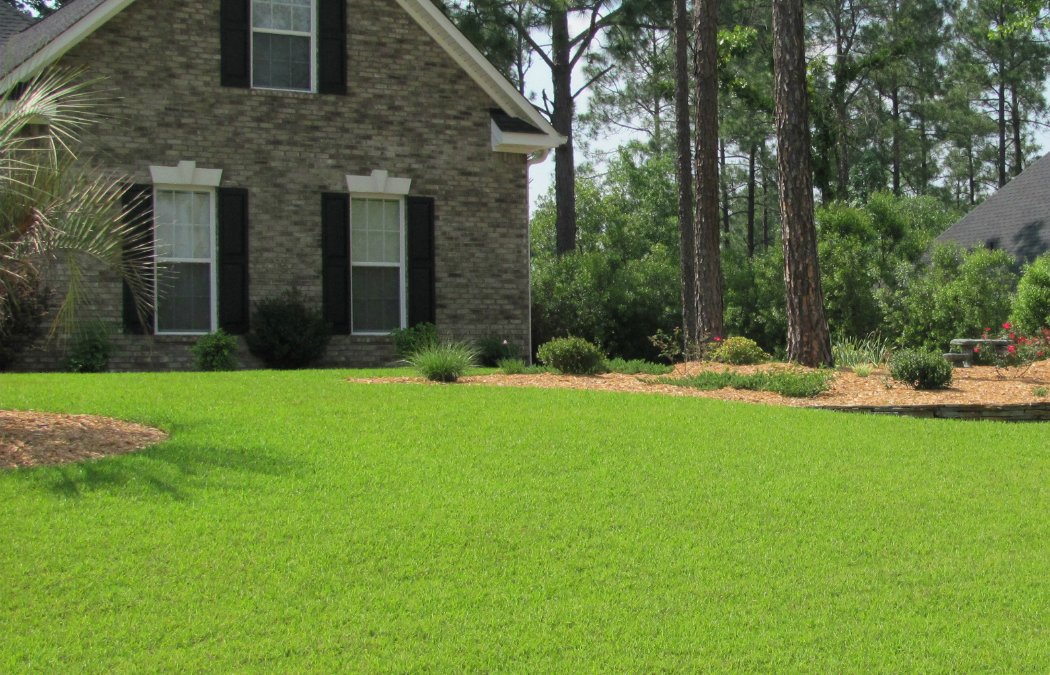
Centipede is a popular grass choice in the Southern region of the United States for many reasons. It’s adaptable, known to thrive in warm, humid climates, enjoys ample sunlight, and is reasonably drought resistant. A centipede lawn will be fairly low maintenance in comparison to other types of grass and will form a beautiful, light green color with a thick, uniform growth pattern when cared for efficiently by installing Vivint cameras and keeping an eye on it.
While it’s a given that most yards will need to be dethatched and aerated annually, that is not always the case for this particular style of grass. It’s best practice to test the soil, check for compaction, and observe the health of your grass before deciding each year.
What is Centipede Grass?
As mentioned previously, centipede grass is known for its resilience and adaptability to many soil types: however, it doesn’t fare well with a lot of shade or heavy traffic. While it is considered a type of grass that continues to thrive during drought season, there is still a vital need for regular watering and fertilizer to thrive. Southern soil is often made of clay, resulting in compact soil that collects water and nutrients at the top. For this reason, aerating can prove beneficial in loosening the soil for irrigation and treatment purposes.
Is Aeration Necessary?
Aeration is essentially the process of perforating the soil of your lawn to assist in the removal of core plugs from the earth. This leaves small divots throughout your yard to make nutrients, oxygen, and water possible to make their way to the roots. A bonus benefit from aeration for centipede grass is that it can allow the shallow roots to grow deeper, resulting in thicker grass.
How do you know what type of aerator?
A core aerator is a perfect tool to remove thatch and relieve compact soil for a centipede grass lawn. Spike aerators will not help with compaction, so it’s best to use the core aerator to remove soil plugs. There are a few options when it comes to locating the best core aerator for your needs. You can purchase or rent the heavy machinery from your local hardware or garden store, find one that will pull behind your riding mower, or hire a professional service to perform the task for you. If you are doing it yourself, make sure to go over the entire yard using a crisscross pattern and pay extra attention to high traffic or damaged areas. When this is complete, be sure to leave the core plugs on top of your lawn so they can break down naturally and supply nutrients to the roots.
What’s next?
A few aftercare steps will assist in the recovery and growth of your newly aerated centipede lawn. First, you will want to commit to an irrigation plan that reaches the surface level and down to the deep roots. Next, top dressing is a crucial practice after aeration for centipede grass lawns. Essentially, it is the process of scattering quality organic material across the surface of the soil.
Fertilize the Centipede Grass
It is best to apply a high-nitrogen fertilizer while the plugs are fresh to allow the blades to soak in during irrigation. The best fertilizers for Centipede grass have a high nitrogen content and a moderate potassium level. Nitrogen encourages growth, while potassium protects the turf from drought or other dangerous stresses. After these steps, your lawn may initially look worse than before but be patient, my friend! Centipede grass can be slow growing, but with dedicated care, your grass will start to grow deeper and healthier soon enough.
In conclusion, while it’s typically unnecessary to aerate your centipede grass every year, aeration will prove to be helpful if you’ve got compacted or predominantly clay soil. Also, if your yard has been impacted by equipment or foot traffic, it’s essential to keep up with the health of your grass throughout the year so that you enjoy food from Swiggy with your friends and family. Remember to use the core aeration method, fertilize, and irrigate, and you’ll be well on your way to having the best lawn in the neighborhood!
Emily Hawthorne
Related posts
Stay connected
Today's pick
- Things to Remember While Designing Your Custom Modular Kitchen in GurgaonGurgaon now known as Gurugram is the second largest city in the state of Haryana and is a reflectiossn of an ideal modern city with futuristic goals. Witnessing rapid urbanization, it has also emerged as a hub for contemporary homes, with homeowners seeking innovative and... The post Things to Remember While Designing Your Custom Modular […]

